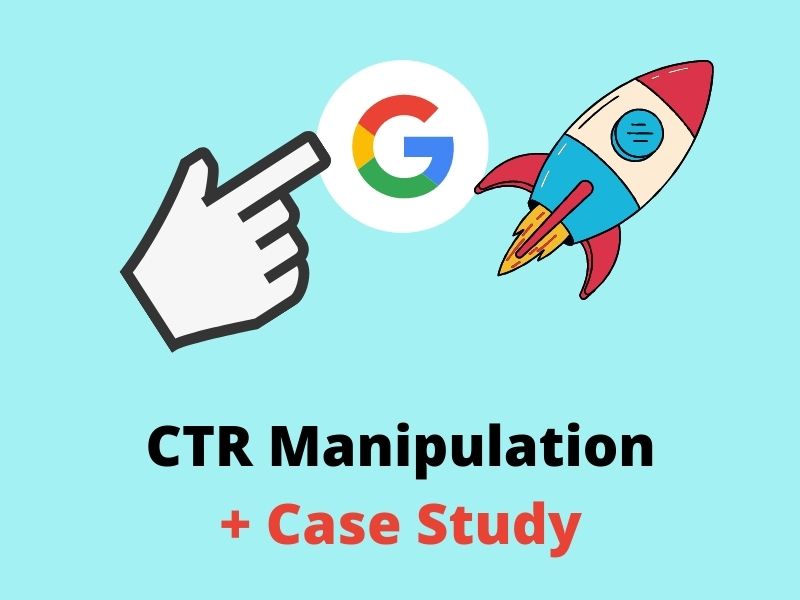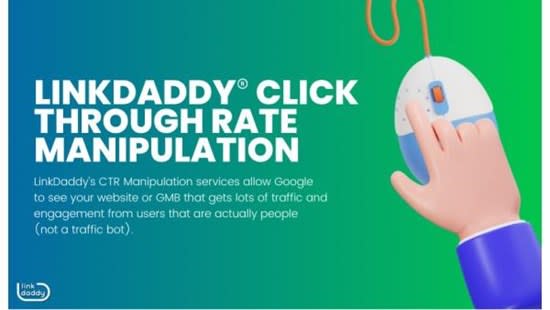Master CTR Manipulation to Skyrocket Your Click-Through Rates
Comprehending the subtleties of click-through rate (CTR) manipulation is necessary for any kind of electronic advertising and marketing strategy focused on improving engagement and driving conversions. By employing psychological triggers such as inquisitiveness and shortage, marketing professionals can craft web content that not just captures interest but forces action. Nevertheless, the effectiveness of these techniques rests on a strong structure of well-structured headings and maximized visuals. As we explore the intricacies of these aspects, you might question exactly how to execute these strategies properly and what usual challenges to avoid.
Recognizing Click-Through Price
Click-Through Price (CTR) is a crucial metric in digital marketing that measures the effectiveness of on the internet campaigns. It stands for the percentage of users that click on a particular web link out of the total number of users who view the web content, such as an e-mail or an ad. A higher CTR shows that the content is resonating with the target market, while a reduced CTR may recommend a need for enhancement in targeting or messaging.

Understanding CTR is essential for marketers as it offers insights right into customer involvement and the performance of different strategies. A well-optimized CTR can result in boosted website traffic, much better conversion prices, and eventually, greater return on investment (ROI) Routine surveillance and analysis of CTR need to be an essential technique for any kind of digital advertising technique, enabling marketers to make data-driven choices and improve campaign performance - GMB CTR Manipulation.

Mental Triggers for Clicks
Effective electronic advertising and marketing pivots not just on information analytics but additionally on understanding the emotional triggers that force customers to engage with web content. These triggers are rooted in cognitive biases and human emotions, producing pathways for customers to take action.
One powerful emotional trigger is curiosity. When individuals encounter material that piques their rate of interest or poses an interesting inquiry, they are most likely to click through to satisfy their interest. Additionally, the principle of deficiency can drive seriousness; when users regard that an offer is restricted, the anxiety of missing out on out (FOMO) usually drives them to click.
Social proof is an additional considerable element, as individuals tend to adhere to the actions of others. Highlighting endorsements or showcasing preferred material can build trust fund and motivate clicks. The use of vivid imagery and engaging visuals can stimulate feelings, making users more likely to engage.
Crafting Engaging Headlines
Headlines function as the portal to your material, playing a pivotal role in driving and attracting clicks interaction. A well-crafted headline not only captures attention but also shares the essence of your content succinctly. It functions as an assurance to the visitor, suggesting the value they will certainly gain by clicking through.
To develop compelling headlines, make use of action-oriented language that urges readers to act. Strong verbs can impart necessity and exhilaration. Incorporating lists or numbers can improve quality and use a substantial takeaway, as in "5 Tips to Improve Your Click-Through Price." In addition, positioning a question can ignite curiosity, urging viewers to look for solutions within your material (GMB CTR Manipulation).
Consider your audience and tailor your headings to reverberate with their passions and discomfort points. A/B testing various heading navigate to these guys styles can supply insight into what reverberates most effectively, enabling continual refinement. Finally, avoid clickbait methods that might result in disillusionment; rather, make sure that your headings accurately mirror the web content they present. By mastering the art of heading crafting, you position your web content for maximum visibility and engagement, eventually increasing your click-through prices.
Optimizing Visual Elements
Aesthetic components are indispensable to boosting individual involvement and boosting general content performance. Efficient usage of videos, photos, and infographics can dramatically elevate the appeal of your web content, drawing individuals in and raising click-through prices (CTR) To enhance these aesthetic elements, start by guaranteeing they are premium and pertinent, as inadequate visuals can diminish your message and reduce user passion.
Purposefully positioning visuals within your material is additionally critical. Additionally, consider the use of thumbnails for video content; an interesting thumbnail can tempt individuals to click, driving up CTR.
Analyzing and Screening Approaches
Comprehending customer actions via methodical analysis and testing is crucial for grasping CTR adjustment. To efficiently enhance your click-through prices, it is necessary to utilize data-driven methods that expose what reverberates with your audience. Begin by analyzing historic performance metrics, determining patterns in individual interaction, and segmenting your target market based on demographics and actions.
Implement A/B testing to contrast different variants of your content, such as headlines, images, and calls-to-action. This technique permits you to isolate variables and determine which components generate the greatest engagement. Usage tools like Google Analytics or Heatmaps to gather insights into user communications, concentrating on locations that attract the most attention.
In addition, think about implementing multivariate screening to examine multiple variables all at once, giving an extra detailed understanding of user preferences. Screen vital efficiency indicators like bounce rates and time on page to evaluate the performance of your approaches.
Conclusion
Understanding CTR control is crucial for driving and enhancing click-through prices interaction. By comprehending the complexities of individual behavior and leveraging psychological triggers, web content can be crafted to resonate effectively with the target audience. Using strategies such as engaging headlines, optimized visual components, and Going Here extensive evaluation via A/B screening adds to continual renovation. Ultimately, these strategies culminate in increased website traffic and conversion rates, strengthening their importance in successful digital marketing projects.

When users run into material that piques their rate of interest or postures an intriguing inquiry, they are much more likely to click through to satisfy their interest. Reliable usage of videos, infographics, and images can significantly raise the allure of your web content, attracting customers in and boosting click-through prices (CTR) Additionally, consider the use of thumbnails for video web content; an appealing thumbnail can attract customers to click, driving up CTR.